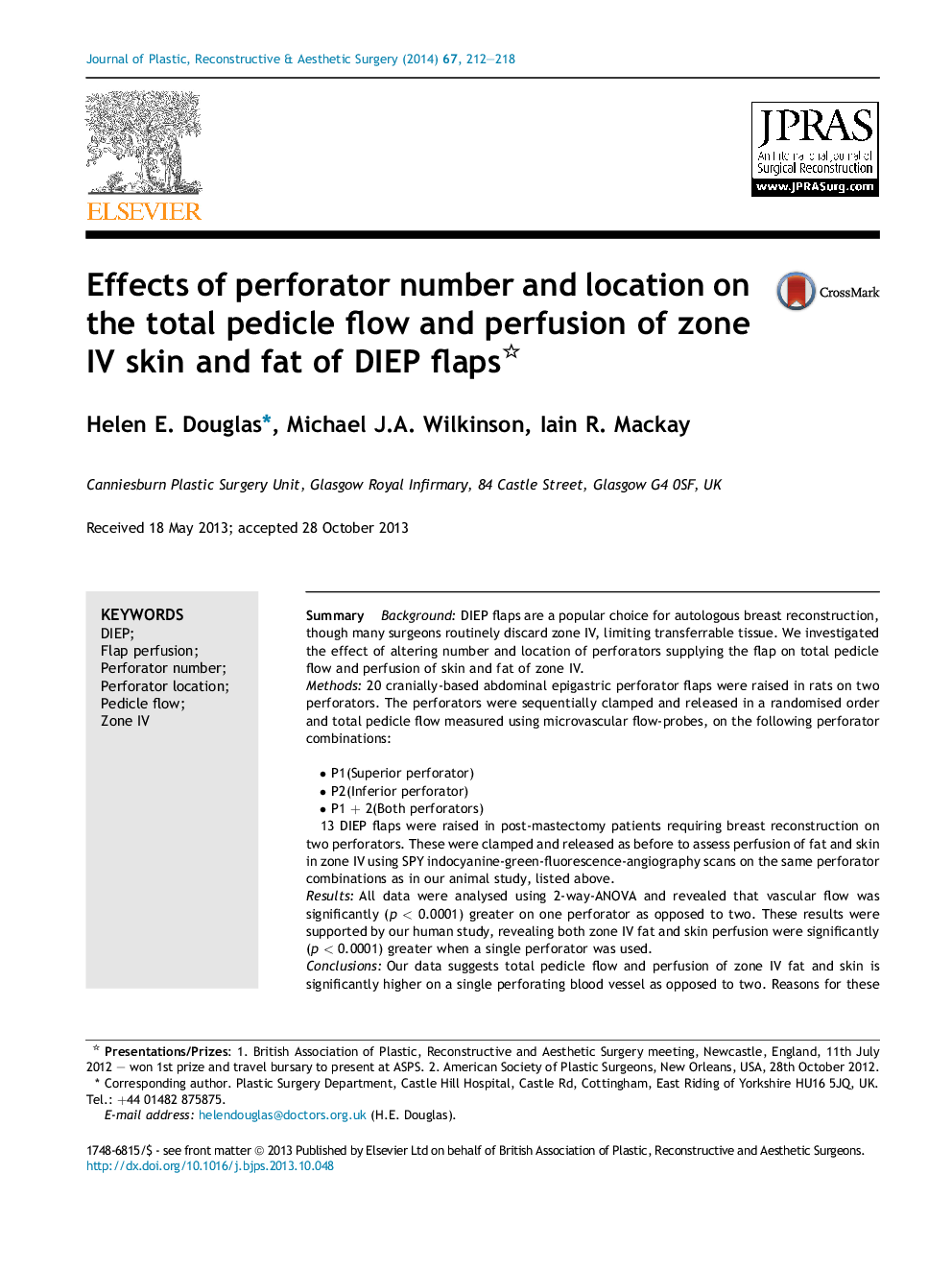| Article ID | Journal | Published Year | Pages | File Type |
|---|---|---|---|---|
| 4118141 | Journal of Plastic, Reconstructive & Aesthetic Surgery | 2014 | 7 Pages |
SummaryBackgroundDIEP flaps are a popular choice for autologous breast reconstruction, though many surgeons routinely discard zone IV, limiting transferrable tissue. We investigated the effect of altering number and location of perforators supplying the flap on total pedicle flow and perfusion of skin and fat of zone IV.Methods20 cranially-based abdominal epigastric perforator flaps were raised in rats on two perforators. The perforators were sequentially clamped and released in a randomised order and total pedicle flow measured using microvascular flow-probes, on the following perforator combinations:•P1(Superior perforator)•P2(Inferior perforator)•P1 + 2(Both perforators)13 DIEP flaps were raised in post-mastectomy patients requiring breast reconstruction on two perforators. These were clamped and released as before to assess perfusion of fat and skin in zone IV using SPY indocyanine-green-fluorescence-angiography scans on the same perforator combinations as in our animal study, listed above.ResultsAll data were analysed using 2-way-ANOVA and revealed that vascular flow was significantly (p < 0.0001) greater on one perforator as opposed to two. These results were supported by our human study, revealing both zone IV fat and skin perfusion were significantly (p < 0.0001) greater when a single perforator was used.ConclusionsOur data suggests total pedicle flow and perfusion of zone IV fat and skin is significantly higher on a single perforating blood vessel as opposed to two. Reasons for these observed differences could be due to changing pressure gradients across a piece of tissue prone to venous congestion, with maintenance of flow better in a single lumen.
